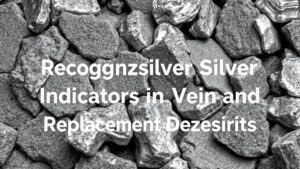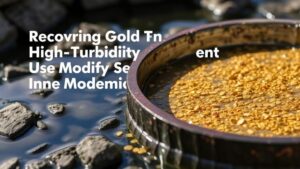Spotting Indicators of Copper in Polymetallic Sulfide Zones
Spotting Indicators of Copper in Polymetallic Sulfide Zones
The extraction of copper from polymetallic sulfide zones presents both challenges and opportunities in modern mineral exploration and mining. Understanding how to identify indicators of copper within these mineral complexes is crucial for efficient resource utilization and environmental management. This article delves into key indicators, geological contexts, and case studies that illustrate the best practices for spotting copper in polymetallic sulfide deposits.
Understanding Polymetallic Sulfide Zones
Polymetallic sulfide zones typically occur in volcanic and sedimentary environments, particularly in mid-ocean ridges and back-arc basins. e deposits contain a variety of metals including copper (Cu), lead (Pb), zinc (Zn), gold (Au), and silver (Ag). The dominance of copper often correlates with specific mineralogical compositions and geological settings.
Geological Indicators of Copper
To efficiently locate copper, geologists and mining professionals must recognize specific geological indicators. Some of the prominent indicators include:
- Mineral Assemblage: The presence of chalcopyrite (CuFeS2) is a primary indicator of copper. Other associated minerals may include bornite (Cu5FeS4) and malachite (Cu2CO3(OH)2).
- Alteration Patterns: Hydrothermal alteration often influences the distribution of copper. Look for potassic alteration as it usually indicates proximity to copper-rich zones.
- Geochemical Anomalies: Elevated copper concentrations in soil or rock samples are strong indicators. Anomalies greater than 100 ppm in surface samples can signal potential deposits.
Geophysical Techniques
Advanced technological methods play a vital role in identifying copper in polymetallic sulfide zones. Geophysical surveys can effectively delineate mineralization patterns:
- Magnetometry: Variations in magnetic susceptibility can highlight areas where copper occurs alongside iron.
- Induced Polarization (IP): IP surveys can detect the chargeability of sulfide minerals, aiding in the identification of copper-rich sections.
For example, a magnetometry survey conducted over the Seafloor Massive Sulfides (SMS) at the East Pacific Rise produced distinct anomalies correlating with known copper deposits, showcasing the effectiveness of these methods.
Case Studies of Successful Exploration
An examination of successful copper polymetallic sulfide explorations can provide valuable insights. One notable case is the discovery of the Tuvatu gold-silver-copper deposit in Fiji, where advanced geochemical sampling and geophysical techniques guided the exploration strategy. The use of 3D modeling based on mineralogical and geochemical data allowed geologists to pinpoint areas with elevated copper signatures, leading to successful extraction efforts.
Environmental Considerations
As exploration for copper in polymetallic sulfide zones increases, stakeholders must consider environmental impacts. Specific practices can mitigate detrimental effects:
- Baseline Environmental Studies: Conduct comprehensive assessments prior to any exploration activities to understand potential impacts on local ecosystems.
- Responsible Waste Management: Develop sustainable methods to handle and store waste materials generated during exploration and extraction.
Conclusion and Actionable Takeaways
The efficient identification of copper indicators within polymetallic sulfide zones requires a multifaceted approach, integrating geological, geochemical, and geophysical techniques. By understanding the mineral assemblages, alteration patterns, and employing modern exploration technology, geologists can more effectively locate copper-rich deposits.
For those involved in mineral exploration and mining, consider the following actionable takeaways:
- Employ a combination of geochemical sampling and geophysical surveys to enhance exploration accuracy.
- Stay updated on best practices for environmental management to ensure sustainable mining operations.
- Analyze successful case studies to adapt exploration strategies that maximize resource discovery while minimizing ecological impact.

